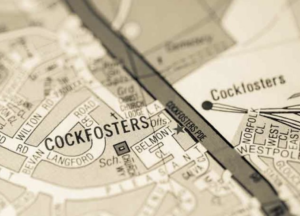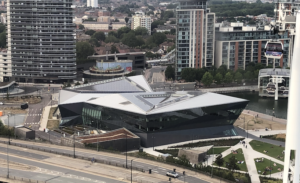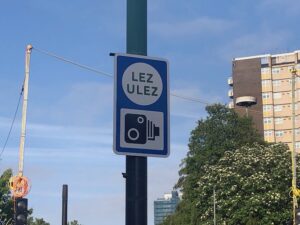I hope gauging the electoral importance of Sadiq Khan’s Ultra-Low Emission Zone expansion plan is good for the soul, because it often feels like a mug’s game.
At Mayor’s Question Time (MQT) last week, Conservative London Assembly member Susan Hall quoted what she called “proper figures” about the number of vehicles in Greater London that currently don’t come up to the ULEZ anti-pollution standard.
That was a reference to the Mayor previously incorrectly stating that the cars of nine out of ten outer London households that possess one comply with ULEZ standards. TfL says that nine out of ten cars seen being driven in outer London by TfL’s automatic numberplate recognition cameras (ANPR) are ULEZ-compliant, which isn’t the same thing. That is because not every car that travels through outer London is owned by an adult Londoner – a person likely to be able to vote in next election for London Mayor, at which Khan will be seeking a third term.
Hall’s “proper figures” for ULEZ-compliance were also compiled by TfL, but derived from a different source – the Society of Motor Manufacturers and Traders (SMMT).
A previous Freedom of Information request by BBC London political editor Tim Donovan had prompted TfL to produce an analysis of and an “explanatory note” about the SMMT data. City Hall made this available to Hall and other London Assembly members on the morning of MQT (and has since then given it to me too).
Drawing on this TfL note, Hall said at MQT that in both Harrow (where she is a councillor) and in Sutton, 83 per cent of cars are compliant. She added that the 17 per cent that aren’t “represents 16,000 vehicles,” though that figure was not provided by TfL.
I understand it was arrived at by calculating what 17 per cent of the total number of cars registered in each of those two boroughs was at the end of 2021 according to Department for Transport (DfT) figures, rather than the SMMT’s for the whole of 2022 discussed in the TfL note.
How many London households have cars that fall short of ULEZ pollution standards? And how many voting Londoners are likely to turn against Khan because of his ULEZ expansion plan, due to come into effect on 29 August?
The explanatory note reiterates why TfL doesn’t use the SMMT data for measuring ULEZ-compliance and prefers what it detects through its automatic number plate recognition cameras (ANPR). In the words of the note, TfL considers this “the only data set that gives a robust and accurate picture of how many vehicles are regularly driven in London – including vehicles that travel into the city from outside the boundary” (my italics).
Indeed, the SMMT figures do not, of themselves, measure ULEZ compliance. Rather, they compile information about the locations of vehicle ownership registrations and vehicle types using, as TfL’s website puts it, statistics from the government’s Driver and Vehicle Licensing Agency (DVLA) and additional information from the motor industry.
But this information has enabled TfL to arrive at figures for how many vehicles registered in London are ULEZ-compliant, including at borough levels, as distinct from data about vehicles driven through London, which might be registered elsewhere and therefore owned by people who live – and therefore vote – elsewhere.
TfL’s explanatory note points out that the SMMT data “includes vehicles registered but not necessarily kept or driven in London”, such as company fleets. The data also doesn’t reveal how often vehicles are driven. Even so, the TfL note states that the SMMT data was “correct at the end of 2022” and it looks like a reasonable guide to the number of Londoners whose cars are ULEZ-compliant or otherwise.
Is Susan Hall’s 16,000 figure solid? There are more recent DfT figures than those she relied on, at short notice, for her calculation of what a 17 per cent (roughly one in six) non-compliance rate represents in absolute numbers.
According to those most recent DfT figures, which are specifically for the third quarter of 2022 (July-September), the total number of cars registered in Harrow at that time was 97,900.
That grand total includes private cars and company cars, diesel cars and petrol cars and also 12,500 cars powered by unspecified “other fuels”, which I’m assuming from DfT guidance mostly means electric vehicles of various kinds.
The SMMT figures are for the whole of 2022, not one particular quarter of it. But if we nonetheless apply the SMMT-derived 17 per cent non-compliance rate to that DfT quarterly total, we get 16,643 cars – comfortably above the round figure of 16,000 put forward by Hall.
We also need to consider the much smaller but still significant number of light goods vehicles – basically vans – in Harrow. The most recent DfT figure is that 5,700 were registered in the borough. The SMMT data show that only 45 per cent of them were ULEZ-compliant, according to TfL’s analysis.
The DfT’s latest figures for all cars, private and company, in all 19 outer London boroughs combined is 1,912,500 and for all vans 159,300 (figures from DfT data set VEH0105). The TfL note about the SMMT figures shows that car compliance rates across the outer boroughs is running at about 84 per cent and van rates at 51 per cent.
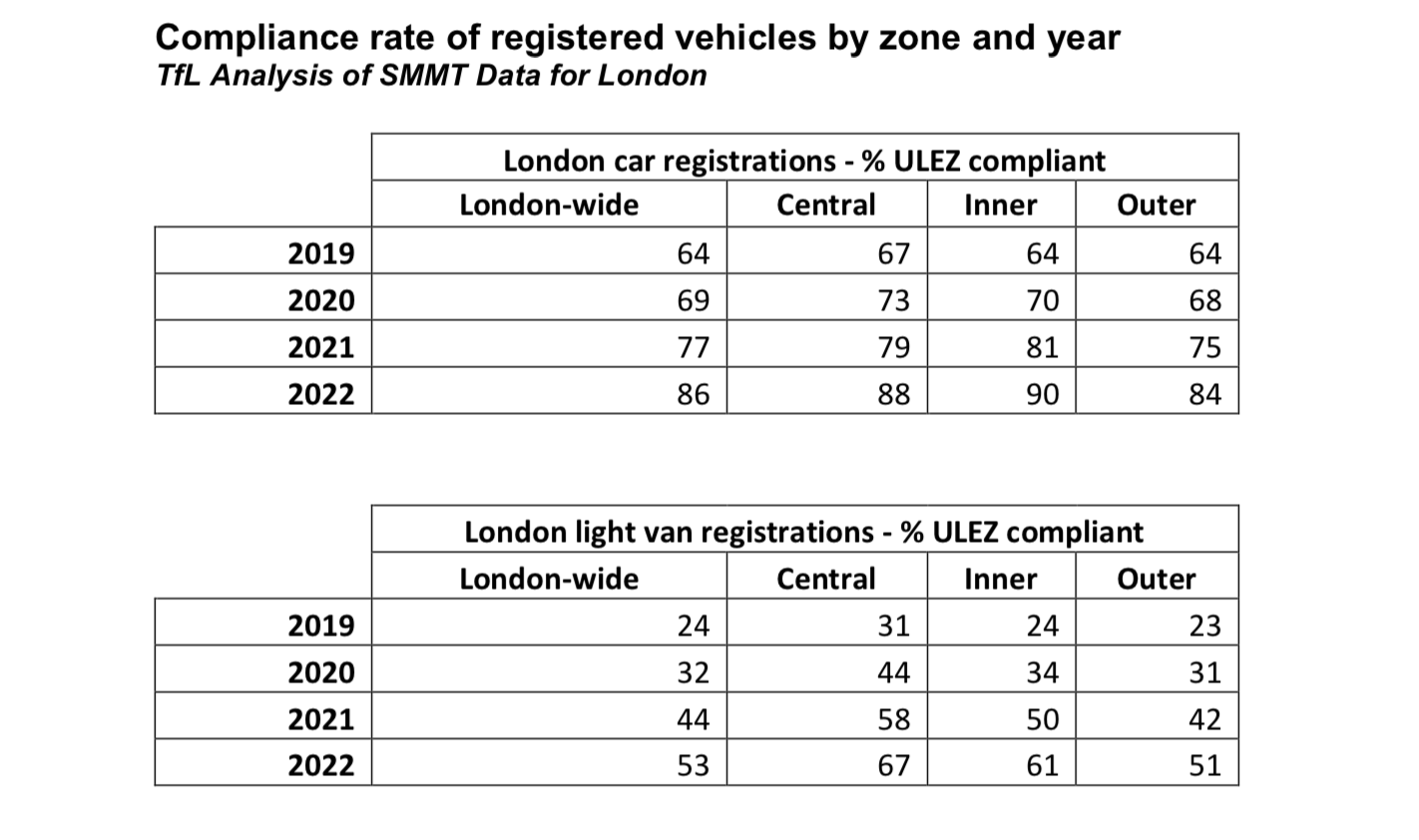
What do all these figures equate to in terms of votes at the next mayoral election on 2 May, 2024?
Here’s where this exercise resorts to the back of an envelope, though I would be surprised if London politicians and campaigners haven’t been doing the same thing.
According to my abacus, 16 per cent of 1,912,500 cars is 306,000 that weren’t ULEZ-compliant as of the end of September 2022 and 49 per cent of 159,300 vans is 78,057 that weren’t ULEZ-compliant at that time. Add those two numbers together and you get 384,057 cars and vans combined registered in outer London that didn’t meet ULEZ standards as of early last autumn.
In the subsequent six months that figure seems certain to have fallen: Khan and TfL have pointed out that the number of non-compliant vehicles seen within the area the expansion will cover has been reducing and the TfL note points out that the SMMT figures show the same general trend.
Let’s take a guess that we are by now talking about something nearer 300,000 London households or London-operating business owners with non-compliant vehicles in the outer boroughs. There will also be some households and businesses in inner London boroughs set to fall within the ULEZ for the first time because its current boundary stops at the North and South circular roads, which cuts through some boroughs.
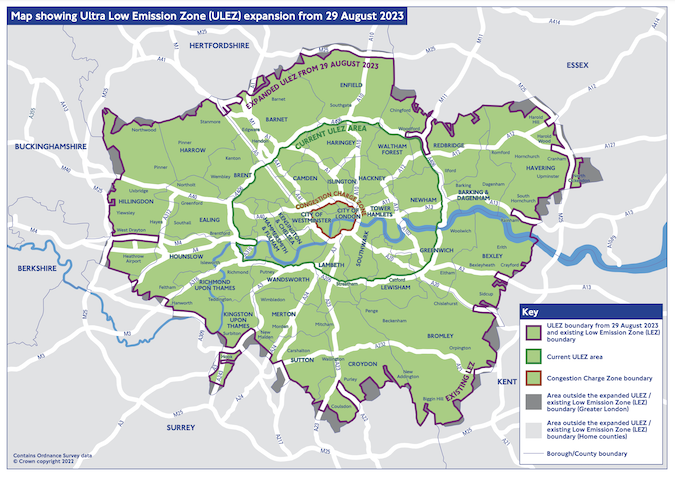
How many people who make use of those vehicles might feel unfairly adversely affected by the ULEZ expansion plan? In many cases, a London household with a car will comprise just one person. In others there will be two, three or more adult Londoners who will feel they are going to be hit by the policy even if they don’t actually drive the non-compliant car, because the cost of replacing it or paying a daily charge will have an impact on the entire household’s finances.
How many of those voting-age outer Londoners are feeling fed up with Sadiq Khan about the ULEZ expansion? Half a million? More?
Not all ULEZ opponents will be voters – turnout at the last mayoral election was 42 per cent – although some might be motivated by the issue to cast a ballot next year having not bothered to at previous mayoral contests. And although the number of non-compliant vehicles has been going down- some of which would have happened without the ULEZ factor – people who have already changed their cars reluctantly might still resent it. Looking Londonwide, that group could include those who did so in advance of the previous expansion out to the North and South Circular roads in October 2021.
The total number of first preference votes successfully cast in May 2021 was 2,531,357. Of these, Sadiq Khan received 1,013,721 and his Tory rival Shaun Bailey 893,051 – a difference of 120,670. Khan pulled much further ahead once the second preference choices of other candidates were added, but the supplementary vote system is to be replaced next year by first past the post.
Assessed from such angles you can see why Conservatives and like-minded commentators are optimistic that the ULEZ issue is a big help to them with the uphill task of defeating Khan at a time when support for the Tories among Londoners has fallen very low.
Moreover, the prominence it is being given by the media and the fierce, sometimes ugly, emotions it stirs are assisting Conservatives with constructing a broader narrative against Khan, depicting him as overbearing and as hypocritically hurting some of London’s less well-off people and less secure small businesses right in the middle of a cost of living crisis.
However, there are other ways of evaluating the electoral implications of all this. Londoners for whom the ULEZ has had or could have financial implications are quite a small minority – almost half of London households don’t have a car at all, and of those who do the vast bulk have never had anything to fear from the ULEZ at any stage of its existence because their vehicles have long met its standards.
Moreover, some ULEZ opponents directly impacted by the policy will be Conservatives voters anyway. And even if we anticipate that others who would normally vote for the Labour candidate might decide not to do so at the next election, a Labour optimist can reasonably expect that not all of them will necessary swing behind the Tory candidate and point to the London element of a very recent national poll which indicated more support for ULEZ schemes in general than opposition to them and a strong alignment between backing them and backing Labour.
That Labour optimist might go on to reason that a small, sometimes noisy, minority of a small minority of London voters who might abandon Khan next May over the ULEZ will be outweighed by a quieter yet larger number – Khan himself has referred to a “silent majority” – who will welcome the latest expansion because they want cleaner air across the whole city, even if the overall improvement is small.
And what about the outcomes of council by-elections in wards the enlarged ULEZ will cover from 29 August, assuming it isn’t blocked by the courts? Three have been held this year: one in Hounslow, one in Enfield and one in Barking & Dagenham. In each campaign the Tories have gone hard on the ULEZ. But although Labour has lost ground in each contest there has been no clear evidence that hostility to Khan’s plan has really paid off
What do you think? Is the ULEZ row’s bark worse for Mayor Khan than its electoral bite will turn out to be? I think it might be, but I could be wrong. Did I mention that trying to answer that question feels like a mug’s game?
Article modestly augmented on 30th May 2023.
Twitter: Dave Hill and On London.
On London and its writers need your backing. Give £5 a month or £50 a year and receive in return the weekly newsletter On London Extra and (at no additional charge) invitations to events featuring eminent Londoners. Pay using any of the “donate” buttons on the site, by becoming a paid subscriber to my Substack, or directly into the company bank account. Email davehillonlondon@gmail.com for details. Thanks. Dave Hill.

